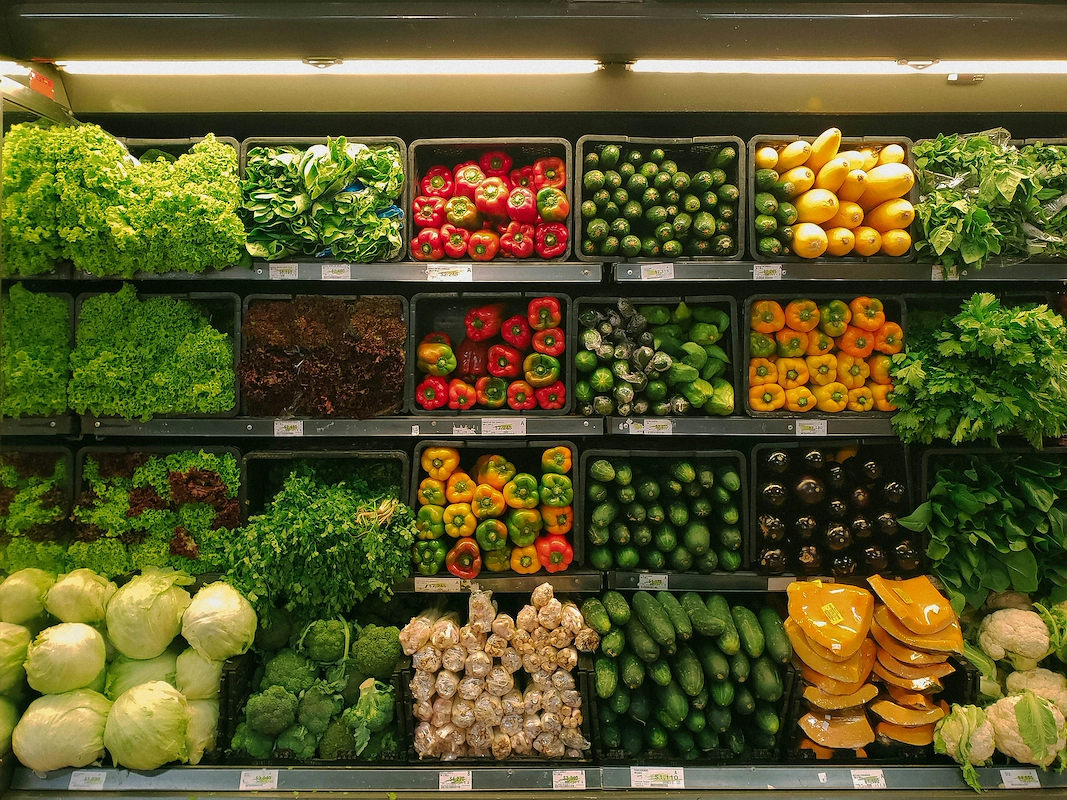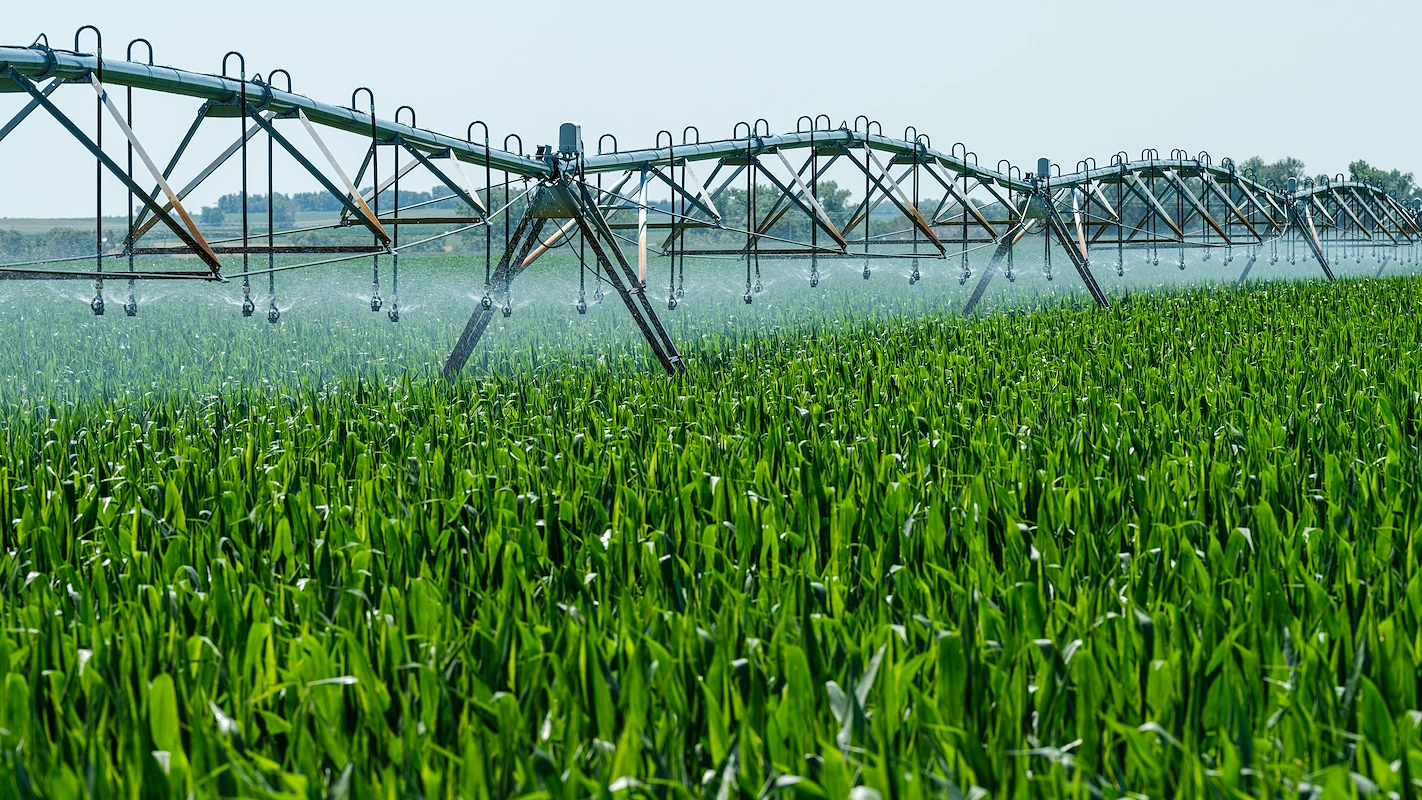Starting a grocery business is an exciting venture that combines a passion for food and community with sharp business savvy. The U.S. grocery market is a massive industry, worth hundreds of billions of dollars, thanks to the steady demand for daily necessities from families, young professionals, and local restaurants.
This guide will take you through the practical steps of validating your business concept, securing funding, obtaining the right permits, and selecting a location to help you launch a successful grocery business.
Step 1: Plan your business and validate your concept
Market and competitor research
Start by researching your local area. Use the U.S. Census Bureau's data explorer to understand neighborhood demographics. This information helps you decide what products to stock, as a family-heavy area needs different items than a neighborhood full of young professionals.
Next, identify your direct competitors using Google Maps. You should visit at least three of them in person. Note their store layout, product selection, pricing, and customer service. This on-the-ground research is more valuable than any online report.
A mistake many new owners make is to only research online. You miss the feel of a store and how customers interact with it. This direct observation helps you find a gap in the market that your store can fill.
Startup cost breakdown
With your research complete, you can create a realistic budget. Initial costs for a small to mid-size grocery store often range from $100,000 to $300,000. This figure can feel large, so a detailed breakdown helps manage expectations and plan your funding strategy.
Here is a typical allocation of funds:
- Initial Inventory: $50,000 - $150,000
- Store Fixtures & Refrigeration: $30,000 - $100,000
- Lease & Renovations: $10,000 - $50,000
- Licenses & Permits: $1,000 - $5,000
Under-budgeting for initial inventory is a frequent misstep. A well-stocked store from day one is key to attract and retain customers.
Here are 3 immediate steps to take:
- Use the U.S. Census Bureau's data explorer to profile your target neighborhood.
- Visit three local competitors to analyze their product range and pricing strategy.
- Draft a preliminary budget with estimated costs for inventory, fixtures, and rent.
Step 2: Set up your legal structure and get licensed
You should consider forming a Limited Liability Company (LLC). This structure separates your personal assets from business debts. It also offers pass-through taxation, so profits are taxed on your personal return, which avoids the double taxation of a C Corporation.
A mistake some owners make is to mix personal and business funds. This can remove the LLC's liability protection. Open a dedicated business bank account as soon as you register your business with your Secretary of State.
Secure the right permits
First, get a free Employer Identification Number (EIN) from the IRS website. You will need this for taxes and hiring. If you plan to accept food stamps, you must also apply for SNAP retailer authorization through the USDA Food and Nutrition Service.
Next, contact your state and city. You will need a state sales tax permit, a local business license, and a food establishment permit from your county health department. These can cost between $100 and $1,000 and take 4-8 weeks to process.
The health department permit is a big one. It requires a physical inspection of your premises to ensure you meet food safety standards. Be sure to schedule this inspection well in advance of your planned opening day to avoid delays.
Here are 4 immediate steps to take:
- File for an LLC with your state's Secretary of State.
- Apply for a free Employer Identification Number (EIN) on the IRS website.
- Contact your local health department about food establishment permit requirements.
- List all state and local permits needed and their application deadlines.
Step 3: Secure insurance and manage risk
Essential coverage for your grocery store
You should obtain General Liability insurance with at least $1 million in coverage. This protects you from customer slip-and-fall accidents. Annual premiums typically range from $500 to $1,500 for a small store.
Next, Commercial Property insurance protects your building, equipment, and inventory. A frequent oversight is skipping spoilage coverage. A single power outage can destroy your refrigerated goods, so you might want to add this rider to your policy.
If you plan to have employees, Workers' Compensation insurance is a legal requirement in most states. It covers medical costs and lost wages if an employee gets injured on the job. In addition, consider a Commercial Auto policy if you will use a vehicle for deliveries.
You can get quotes from providers like The Hartford, Hiscox, and Next Insurance. It is a good idea to work with an agent who understands the specific risks of a retail food business, as they can find policies that fit your needs and budget.
Here are 4 immediate steps to take:
- Request quotes for a $1 million General Liability policy.
- Ask insurers about adding a spoilage coverage rider to your property insurance.
- Confirm your state's requirements for Workers' Compensation insurance.
- Contact an agent from a provider like The Hartford or Hiscox to discuss policy options.
Step 4: Select your location and purchase equipment
Look for a space between 2,000 and 5,000 square feet in an area zoned for commercial use. Your local planning department can confirm the specific zoning codes. Good visibility and easy parking are very important for attracting and retaining customers.
When you find a spot, negotiate the lease terms. You might want to ask for a Tenant Improvement (TI) allowance to help cover build-out costs like installing refrigeration. Also, try to secure an exclusivity clause which prevents the landlord from renting to another grocer nearby.
Sourcing your equipment and suppliers
Budgeting for equipment requires careful planning. New refrigeration units can run from $20,000 to $70,000, while store fixtures and shelving may cost $5,000 to $15,000. Some new owners get tempted by used equipment, but a breakdown without a warranty can be a huge setback.
With your location secured, you can set up supplier accounts. Distributors like UNFI or KeHE are great for natural and organic products. Expect minimum orders to start around $500 to $1,000, so plan your initial inventory purchases accordingly.
Here are 4 immediate steps to take:
- Identify three potential locations with commercial zoning and good foot traffic.
- Ask landlords about Tenant Improvement allowances during initial talks.
- Get quotes for new refrigeration units that include warranties.
- Contact a distributor like UNFI to inquire about their account setup process.
Step 5: Set up payment processing
Your customers will expect to pay with cards and digital wallets, so your payment system must handle these transactions smoothly. Look for a solution with transparent pricing and quick fund access. Many new owners get surprised by hidden fees or long transfer times.
Traditional payment processors often charge commission rates above 2.5%, plus monthly fees and hardware costs. This can add up quickly. You want to find a system that keeps more money in your pocket, especially when you first start.
For grocery businesses that need to accept payments on-site or on-the-go, JIM offers a streamlined solution. With JIM, you can accept debit, credit and digital wallets directly through your smartphone - just tap and done.
At just 1.99% per transaction with no hidden costs or extra hardware needed, it's particularly useful for local deliveries or a stall at a farmers' market. Your funds are available instantly.
- Get Started: Download the JIM app for iOS.
- Make a Sale: Type the sales amount, hit sell, and ask your customer to tap their card or device on your phone.
- Access Funds: Your money is available right on your JIM card as soon as the sale is done - no waiting for bank transfers.
Here are 3 immediate steps to take:
- Compare the transaction fees and hardware costs of at least two payment processors.
- Decide if you need a mobile payment option for deliveries or off-site sales.
- Download the JIM app to see how it works on your phone.
Step 6: Secure funding and manage your finances
Finding the right funding
The SBA 7(a) loan is a popular starting point. Lenders typically look for a credit score over 680 and a solid business plan. For a new grocery store, loans often range from $50,000 to $350,000 with interest rates around Prime + 3%.
You might also explore the USDA's Healthy Food Financing Initiative (HFFI). This program offers grants and favorable loans if you plan to open in an area with limited access to fresh food. It is a great option that many new owners overlook.
With funding in mind, let's talk about cash flow. Some new grocers get into trouble by not having enough working capital. You should budget for at least six months of operating expenses, which could be $50,000 to $100,000 for a small store.
Once you secure funds, open a separate business bank account immediately. This keeps your finances clean for tax purposes and helps you track profitability with accounting software like QuickBooks Online from the very beginning.
Here are 4 immediate steps to take:
- Review the SBA 7(a) loan requirements on the official website.
- Check your eligibility for the USDA's Healthy Food Financing Initiative.
- Calculate your working capital needs to cover the first six months.
- Open a dedicated business bank account for your LLC.
Step 7: Hire your team and set up operations
Building your core team
You will likely need three key roles to start. A Store Manager oversees operations and can earn $50,000 to $70,000 annually. Stockers handle inventory for $16 to $20 per hour, and Cashiers manage transactions for $15 to $18 per hour.
Everyone who handles food will need a Food Handler's Permit. These are typically low-cost online courses required by your local health department. This ensures your team understands basic food safety from day one.
Managing daily operations
Many new owners misjudge staffing levels, which leads to long lines or idle employees. You can use scheduling software like Homebase or When I Work to manage shifts and track labor costs against sales data.
A good metric to watch is sales per labor hour (SPLH). Aim for a target between $150 and $250. This figure helps you make informed decisions about staffing during your busiest and slowest times.
Here are 4 immediate steps to take:
- Draft job descriptions for a Store Manager, Cashier, and Stocker.
- Research your state's requirements for a Food Handler's Permit.
- Compare features of scheduling software like Homebase and When I Work.
- Set a target for sales per labor hour to track efficiency.
Step 8: Market your store and acquire customers
Pre-launch and grand opening
Start your marketing 4-6 weeks before you open. Create a Google Business Profile and social media pages. Post "coming soon" updates and photos of the renovation. This builds anticipation in the community.
For your grand opening, run a special promotion like 20% off all produce for the first day. A mistake some owners make is to skip a launch event. It is your best chance to make a strong first impression and attract initial customers.
Ongoing customer acquisition
Once you are open, focus on local outreach. You might want to design a weekly flyer with specials and distribute it within a one-mile radius. Also, consider a simple loyalty program. A punch card for the deli or coffee bar can encourage repeat visits.
Track your efforts. If you run a $300 ad in a local paper and get 30 new customers who mention it, your customer acquisition cost (CAC) is $10 per customer. This helps you decide where to spend your marketing budget.
Here are 4 immediate steps to take:
- Create and verify your Google Business Profile.
- Plan a grand opening event with a one-day-only discount.
- Design a weekly flyer template for local distribution.
- Set up Instagram and Facebook pages for your store.
Step 9: Develop your pricing strategy
Your pricing needs to cover costs and generate profit while staying competitive. Most grocers use a cost-plus model. You take the wholesale cost of an item and add a markup percentage. This markup is not uniform across all products.
Setting your margins
You might want to aim for an overall gross margin of 25-30%. Produce often needs a higher markup, around 40-50%, to offset spoilage. Packaged goods can have a lower markup, perhaps 20-25%, because they are more stable.
A mistake some new owners make is applying a flat markup to everything. This can make you uncompetitive on popular items and lose money on high-spoilage goods. You should price products by category.
For key items like milk, bread, and eggs, you will need to use competitive pricing. This means matching or slightly beating the prices of your local rivals. You can afford a lower margin on these items because they drive foot traffic into your store.
Here are 4 immediate steps to take:
- Create a list of 20 key value items (KVIs) like milk and bread to monitor.
- Visit three local competitors to record prices for your KVI list.
- Set target markups for different categories, such as 45% for produce and 25% for dry goods.
- Calculate the final price for your top 50 products using your target markups.
Step 10: Maintain quality and scale your operations
To keep customers happy, you need to monitor your product quality. A key metric is your spoilage rate. You should aim to keep this below 5% for produce. If you sell organic items, you might want to pursue USDA Organic certification to build trust and command higher prices.
When to expand your business
Growth should be a deliberate process. Many owners make the mistake of expanding too quickly after a few good months. Instead, look for consistent sales growth of 15-20% year-over-year before you consider opening a second location or expanding your current footprint.
Your staffing levels also signal when it is time to grow. If your sales per labor hour (SPLH) consistently stays above $250, your team is likely stretched thin. This is a good indicator that you should hire more staff to maintain service quality.
As you scale, manual inventory tracking becomes difficult. You might want to adopt a system like Yellow Dog Inventory. It is designed for retail and helps you manage stock levels, suppliers, and sales data more efficiently, especially if you plan to operate multiple stores.
Here are 4 immediate steps to take:
- Calculate your current spoilage rate and set a target to keep it under 5%.
- Research the requirements for USDA Organic certification on their website.
- Set a 15% year-over-year sales growth target as your trigger for expansion planning.
- Review features of inventory software like Yellow Dog Inventory.
You have the roadmap to launch your grocery store. Remember that your connection to the community is your greatest asset. Stock what your neighbors love, listen to them, and you will build a loyal following. Now, go make it happen.
When you are ready for your first sale, a simple payment solution helps. JIM turns your smartphone into a card reader for a flat 1.99% fee, with no extra hardware needed. Your funds are available instantly. Download JIM to get set up.















